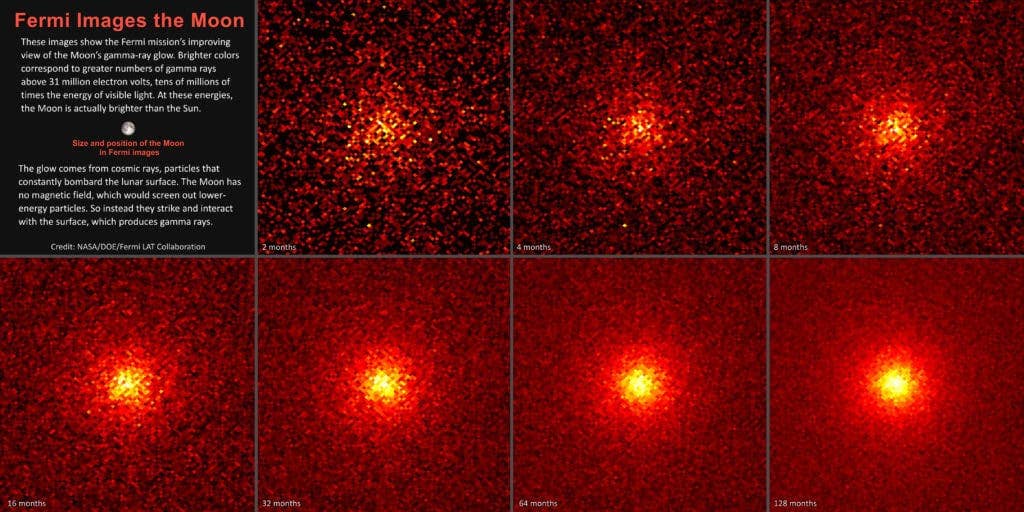No one has ever gone blind from staring on the moon, while the same thing can’t be said about the sun’s glare. However, the moon is, in fact, brighter than the sun when it comes to gamma-ray radiation.

These grainy images were captured by NASA’s Fermi Gamma-Ray Space Telescope. They show the moon as a huge source of gamma-ray radiation — a form of electromagnetic radiation (EM) and the highest-energy photons of which we are aware of.
Gamma rays are created when electrically charged cosmic rays — protons accelerated by supernovae or jets produced by matter sucked into black holes — interact with matter, such as the surface of the moon.
They’re the most deadly type of EM radiation for living organisms. Luckily, they’re largely absorbed by Earth’s atmosphere.
However, on the moon, most of the gamma-ray radiation produced is absorbed by Earth’s natural satellite. Meanwhile, the sun only produces a fraction of its electromagnetic radiation in gamma rays — much less than the moon — because it has a very powerful magnetic field.
You can’t see gamma rays with the naked eye, but that’s where the Fermi Telescope comes in.
In a recent study, astronomers have calculated that the moon’s gamma rays can exceed 31 million electron volts, or 10 million times more powerful than visible light.
This brightness isn’t constant, though. Fermi LAT data show that the Moon’s brightness varies by about 20% over the Sun’s 11-year activity cycle.
“Seen at these energies, the Moon would never go through its monthly cycle of phases and would always look full,” said Francesco Loparco, co-author of the new study and a researcher at the National Institute of Nuclear Physics in Italy.
Although the moon is much brighter in gamma rays than the sun, occasionally cosmic rays will strike the dense part of the sun’s atmosphere, resulting in gamma rays above one billion electron volts. In this range, the sun is actually brighter.
The findings suggest that astronauts visiting the moon or living there over extended periods in a lunar outpost would be a great risk. Gamma rays and cosmic rays have a great penetrating power, which means shielding using elements such as lead is paramount.
NASA plans on sending humans back to the moon in 2024 as part of its Artemis program. Before that happens, we will have to be prepared for the threat of radiation exposure.






